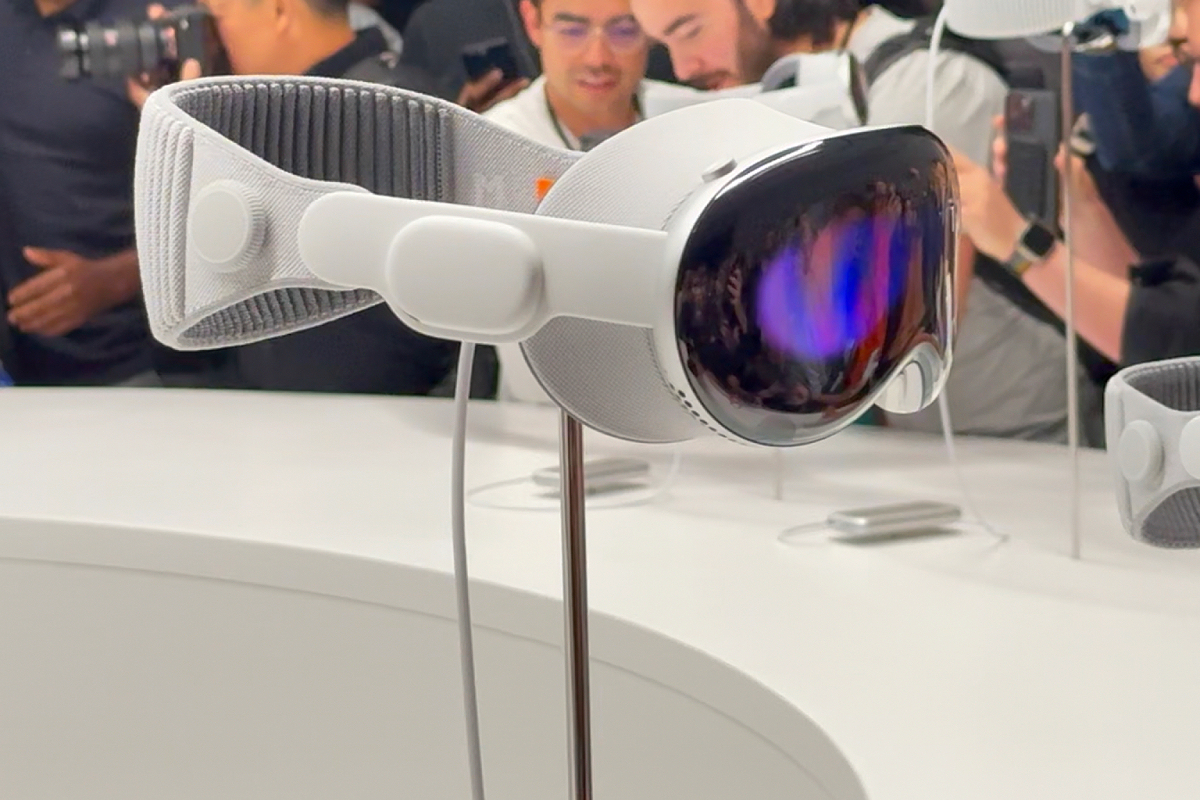Macworld
Apple’s announcement of the Vision Pro mixed-reality headset at WWDC 2023 on Monday was an impressive affair in many ways, from the slick design and obvious tech chops of the device itself to the high production values of the video showing them off. But the best performance of the night may have been the presenters’ intricate dance to avoid the ghosts of past failures.
Because, as usual, Apple is not the first to this market. (At least in the broad sense. Vision Pro is breaking new ground in terms of some specifics.) Google tried to make augmented reality a thing back in 2013 and finally gave up on its Glass project earlier this year. Facebook is desperately trying to make the metaverse a thing and has succeeded only in making its CEO a laughing stock. And while HTC, HP, and others are no doubt making money from virtual reality headsets, none has yet pushed into the mainstream or built a convincing case that VR is a cool technology for cool people.
Apple is clearly aware of the history, and it was striking how careful it was to avoid the pitfalls that ensnared previous competitors. Google Glass owners, for example, were insulted and sometimes physically attacked by passers-by who objected to being filmed without consent, so the Vision Pro presenters did their best to avoid the merest hint of surveillance culture. The spatial video feature was illustrated with a user in their own home filming happy and cooperating members of their own family (it’s odd, incidentally, how indoors the whole demonstration was); it was carefully pointed out that Vision Pro uses the outward screen to signal when a video is being shot, so you wouldn’t be able to do so secretly.
The message was simple: Vision Pro is wholesome. Nobody would use this for illicit or sinister purposes. You can see the person’s eyes! Everything is fine.

Apple
At the other end of the scale sit VR headsets made for gamers. VR gaming is a lot of fun, but it’s almost comically excluding; loved ones will have trouble attracting your attention mid-session, and you barely know which house you’re in when you stop. All of the headsets I’ve tried have put me in a bubble and made a virtue of this: the immersion is total, but that doesn’t lend itself to contact with the outside world. And this leads to stereotypes of lonely, isolated nerds and skepticism from the more tech-agnostic sections of the general public.
Targeting a relatively small demographic of hardcore gamers can work for smaller companies, but Apple needs its headset, eventually, to appeal to almost everyone. It wants Vision Pro to take the iPhone’s place as its central platform, after all. So the company had to go out of its way to emphasize that this headset is different. This headset doesn’t isolate you in a lonely bubble. It’s designed for FaceTime with entire groups of smiling friends; it welcomes other people when you’re ready to engage by showing your eyes on the external screen, and detects them when they approach so it can fade out the background. Most of the demos took place in the context of sociable groups, and in pride of place on the living-room sofa, not hidden away in a basement or bedroom. (No matter that, for me at least, the most compelling use case was total blissful isolation in a busy plane.)
That FaceTime demo, by the way, was also striking in its deliberate distancing from the clumsy and unappealing world of the metaverse. Because Vision Pro covers your face, it’s necessary for the sake of good communication that the system generates an artificial representation of your image. Still, visionOS avatars are much closer to photo realism than the legless cartoonishness of Facebook’s metaverse. And while it would presumably be possible-perhaps even desirable-to have a video chat in a virtual environment, especially if all participants are using Vision Pro, the demo took place in a normal room. All we’re doing, the presenters were reassuring us, is bringing your friends and colleagues into your home. This isn’t some wacky cartoon chatroom. We’re not like that other company.
Learning from other people’s mistakes
Vision Pro is riskier than most of Apple’s product launches because it addresses a market whose value remains unproven. Will mixed reality really be the next big thing? The best most of us can offer is maybe. The smartphone won’t dominate forever, and one day will be displaced by a new platform. But the smartphone’s qualities were apparent right from the start: it could be carried with you wherever you went, it fitted unobtrusively into your life, and it was conceptually close enough to existing technologies for newcomers to understand how it worked. Mixed reality doesn’t have any of those advantages, and the hardware isn’t yet hugely appealing. Headsets are bulky and heavy, battery life is poor, and the control methods are completely different from what we’re used to.

Apple has to convince people that bulky VR headsets aren’t just for geeks.
Petter Ahrnstedt / Foundry
All of this means Apple has an enormous challenge on its hands. It doesn’t just have to convince customers that this specific product is good; It has to sell the entire concept of mixed reality. A lot of potential customers aren’t familiar with the technology, which is a problem. But a bigger problem is the fact that others are, and don’t like what they’ve seen. So before it can even get to the hard sell, Apple has to fix the PR damage wrought by the companies that came before.
The whole thing is a terrifying balancing act. We’re not as isolating as VR, but we’re not as intrusive as Glass. We want to talk about the potential of virtual interaction, but we don’t want to make you think about Mark Zuckerberg and the metaverse. We want to say that this is a revolutionary product, without frightening customers with too much change. And we want to sell a product concept that will probably hit its stride several generations down the line while encouraging developers to get behind it right now in order to generate momentum and build content.
Frankly, it’s amazing that the presentation went as well as it did.
Read More
Title: Apple needs to sell a VR headset to people who hate VR headsets
Sourced From: www.macworld.com/article/1945323/apple-vision-pro-isolation-intrusion-google-glass-metaverse.html
Published Date: Fri, 09 Jun 2023 10:30:00 +0000
.png)





